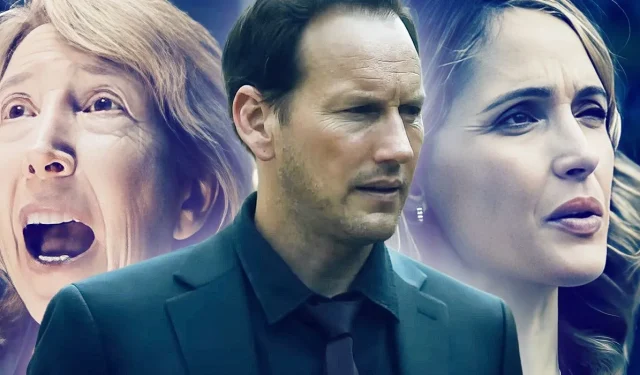The Insidious film series has cemented its place as a quietly successful horror franchise, renowned for its innovative storytelling and unique approach to the genre. Launched in 2010, the franchise was masterminded by the dynamic duo, James Wan and Leigh Whannell, whose contributions to horror history extend back to their groundbreaking work on the Saw films. With Insidious, they sought to demonstrate that effective horror does not require excessive gore, instead emphasizing psychological elements and suspense.
Throughout its installments, the Insidious series features a consistent cast, including the talented Patrick Wilson, Rose Byrne, and Lin Shaye. The films are characterized by their modest budgets, shared crew, and familiar faces, resulting in a homegrown quality reminiscent of the classic horror works by directors like Wes Craven and George A. Romero. While the franchise has experienced diminishing returns in some of its later films, each entry offers something valuable, contributing to the ongoing narrative of horror cinema.
5
Insidious: The Last Key (2018)
Lin Shaye Struggles in a Confusing Narrative
As the fourth entry in the Insidious franchise, The Last Key marked the first film not directed by Wan or Whannell, with Adam Robitel stepping in as director. Known for his work on the Escape Room series, Robitel navigates Elise Rainier’s (played by Lin Shaye) formative years, leading to her career as a paranormal investigator. This installment, which concludes with a flashback to Renai Lambert’s (Byrne) plea for help from the first film, is a turbulent mix of intrigue and confusion.
Despite giving Shaye a significant leadership role, The Last Key falters, holding a mere 34% on Rotten Tomatoes. It grossed an impressive $167.9 million against a $10 million budget (via BoxOfficeMojo), yet the film’s convoluted lore mechanics render it less effective, as viewers struggle to keep up with the narrative’s twists.
4
Insidious: The Red Door (2023)
Attempts to Reinvigorate the Franchise Lack Originality
Surprising audiences, Insidious: The Red Door emerged five years later, aiming to breathe new life into the series. However, while it presented a slight improvement over The Last Key, it fell short of the triumphant comeback many anticipated. Set nine years after the haunting events of the original film, it reveals a fractured family dynamic: Josh, now divorced from Renai, grapples with the loss of his mother while his relationship with his son Dalton suffers.
The family’s repressed emotions reopen the door to their past nightmares, urging them to confront an old enemy. The film benefits from the return of cast members Wilson, Byrne, and Simpkins and adopts a nostalgic approach. While Wilson’s direction is competent, the movie struggles to introduce truly original concepts, earning a 40% score on Rotten Tomatoes—notably lower despite its impressive box office of $189 million (via BoxOfficeMojo).
3
Insidious: Chapter 2 (2013)
A Disappointing Continuation with Strong Character Development
The anticipation surrounding Insidious: Chapter 2 was significant, especially in light of its predecessor’s success and Wan’s achievement with The Conjuring. Ultimately, the film grossed $161.9 million on a mere $5 million budget (via BoxOfficeMojo) but received a lackluster 38% rating on Rotten Tomatoes.
The film continues the Lamberts’ journey as they strive to sever their ties with the spirit world established in the first installment. While the storyline boasts moments of genuine creepiness, it ultimately lacks the tension that made the original so effective, even though the character growth among the Lambert family remains engaging.
2
Insidious: Chapter 3 (2015)
A Unique, Sentimental Approach to the Insidious Narrative
Directed by Leigh Whannell in his debut directing role, Insidious: Chapter 3 stands out as an accomplished entry within the franchise. Garnering a 56% on Rotten Tomatoes and raking in $113 million against a $10 million budget (via BoxOfficeMojo), it performs admirably as a sequel, delivering both thrills and emotional depth.
This prequel centers on Quinn Brenner (Stefanie Scott), a girl who inadvertently awakens a malevolent demon while attempting to contact her deceased mother. Although less frightening than the Wan-era films, its emotional resonance—sometimes bordering on sentimentality—has become a cherished aspect of the franchise. Lin Shaye’s compelling performance ensures that the film retains a strong connection to the original story.
1
Insidious (2010)
An Effective, Tightly Crafted Horror Film on a Shoestring Budget
Marked by its impressive critical reception, Insidious holds a 66% rating on Rotten Tomatoes and became a commercial success, grossing $100 million from a modest $1.5 million budget (via BoxOfficeMojo). Patrick Wilson shines as Josh Lambert, effectively portraying a father driven by both fear and determination to protect his family. However, it is Rose Byrne’s compelling portrayal that truly captivates, delivering authentic reactions amid the film’s scariest moments. The use of music, particularly Tiny Tim’s “Tiptoe Through the Tulips,”remains haunting long after the credits roll.
The Future of the Insidious Franchise

As Patrick Wilson took the helm as director for Insidious: The Red Door in 2023, the film achieved the highest box office in the series, amassing $189.1 million from a $16 million budget. However, despite its commercial success, the critical reception was far from favorable, with a 39% score on Rotten Tomatoes and a lukewarm audience rating of 69%. While the film attempts to provide closure to the overarching story, its performance at the box office suggests that the franchise is far from over.
Several projects related to the Insidious universe have been canceled, including crossovers with Sinister and plans for a stage adaptation. Nevertheless, a sixth installment, initially slated for August 2025, has been pushed to an August 21, 2026 release. Details on the upcoming film remain scarce, leaving fans wondering about the potential return of Wilson and Whannell to the franchise.


